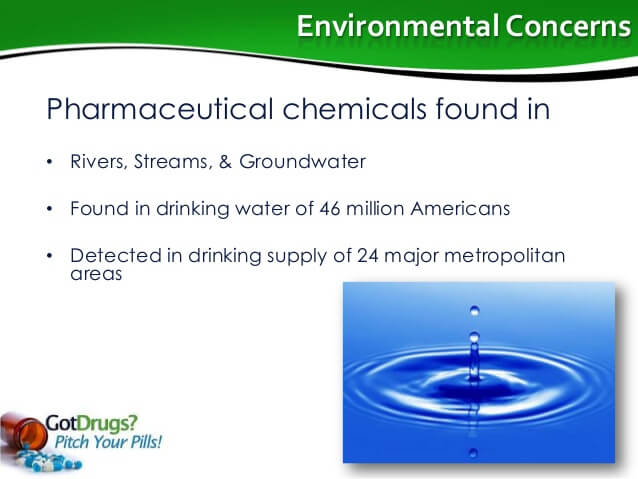From Guest Blogger Bobbi Peterson: How the Pharmaceutical Industry Impacts the Environment

But that whole, huge market doesn’t run on air. It needs resources. While scientists can synthesize many of those resources in labs, they all have natural origins. For example, acetylsalicylic acid — or aspirin — is similar to a chemical called salicin, which comes from willow bark and has been a healing remedy since the age of Hippocrates.
The pharmaceutical industry’s impact on our environment is significant, but it hasn’t received as much attention as, for instance, the fallout from oil spills or diamond mining. What are some ways the pharmaceutical industry is affecting our planet?
The Water Supply
Greenhouse gases aren’t the only damaging kind of emissions. Pharmaceutical companies are on the cutting edge of new technology, many of which focuses on antibiotics. Since we are continuing to see a rise in drug-resistant bacteria, most scientists and doctors have recommended strict regulations on the use of antibiotics. Manufacturing companies that are disposing of their waste materials improperly, or with a method that contaminates the environment, are raising the risk of creating more antibiotic-resistant bacteria.
That’s a big issue. Of course, most countries have regulations in place that are supposed to help prevent that from happening. The problem is that companies still must dispose of the waste they create, and we aren’t always sure the way we’re doing it will be beneficial in the long run.
Most of the waters in the world contain traces of pharmaceuticals. Even when the companies themselves aren’t responsible for contaminating the water, individuals sometimes flush old or unused medications down the drain, adding to the traces in the water supply.
Even when people aren’t dumping their medications down the drain, chemicals from medicine still find their way into the water supply. The body cannot fully metabolize all medications, so they get excreted in what is essentially a diluted form. These medicines include everything from antibiotics to birth control and steroids. The effects of this kind of contamination on humans seem small, but it may have a much larger impact on wildlife.
The Production Line
India is the third-largest area of drug production in the world, mostly thanks to cheap labor. Most of the companies are controlled by other nations, with the profits from the corporations going to those countries, instead of India. Recent studies have found areas close to major manufacturing sites in India contain incredibly high levels of pharmaceutical contamination. Some of those contaminants are broad-range antibiotics, which again raises fears about the ever-increasing spread of drug-resistant bacteria.
This kind of water contamination is associated with drug manufacturing plants all over the world. Developing nations like India, China and even Korea are at higher risk. Because these countries offer a more affordable labor supply, they have become a haven for pharmaceutical manufacturing. However, there is also less government oversight in these countries, which means they are less likely to address ways to clean up a contaminated water supply.
Many other industries are swinging toward sustainability. However, the pharmaceutical industry is woefully behind in this area. Pharmaceuticals do not include sustainability and eco-friendliness as part of their quality assurance. For instance, there are almost never pill bottles marked as “made from recycled materials.”
What Is the True Impact on Our Environment?
Another concern with the environmental damage from the pharmaceutical industry is manufacturing. Like most plants, their emissions tend to be high. This is the result of various process and outputs that the pharmaceutical industry has, and the unique challenges those represent. One issue is that some of the waste gases have a lower explosion limit, making them potentially more hazardous.
The result is that this trillion-dollar global industry is doing some strange things to the environment. The long-range effects have yet to be studied in-depth. There’s a popular clip of right-wing radio host Alex Jones ranting about “turning the frogs gay.” While his homophobic description is a far cry from what’s actually happening, it is true that the hormones, birth control and steroids contaminating the water supply do affect our wildlife. Frogs just happen to be one of the first species to develop symptoms when something goes wrong in the environment.
The main issue is that we just do not know enough about how to prevent contamination or what it will do. There have been some studies, but not enough to figure out how it will affect the wildlife that come into direct contact with the drugs, and those higher up in the food chain. More studies and time will reveal the answers to those questions, and probably provide more!
